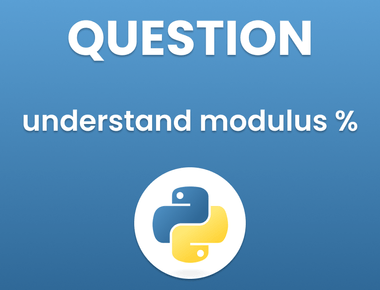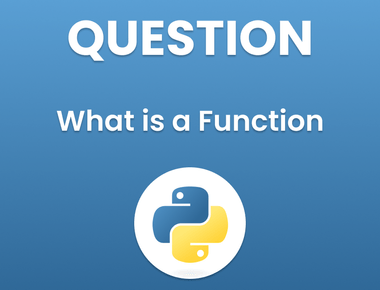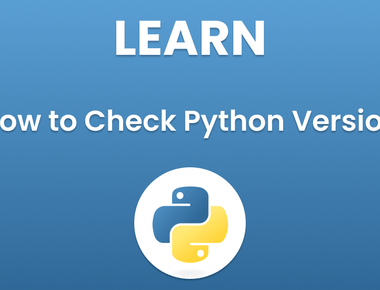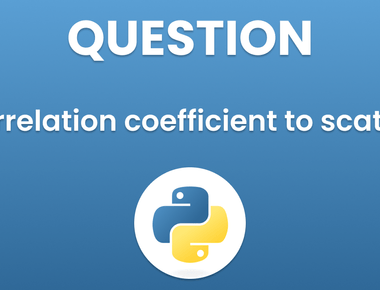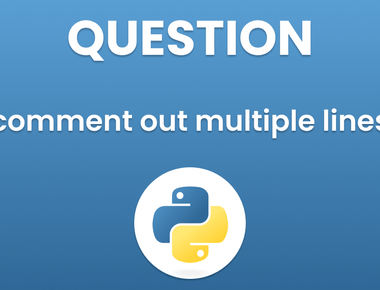Table Of Contents

Introduction
In this article, we will investigate the concept of self in Python in detail. We’ll describe What is Self in Python, its workings, and its significance within OOP. Furthermore, we provide examples to help you better comprehend how to incorporate self into your code.
Python is an efficient programming language that encourages developers to write clean, efficient code. One of the key advantages of Python lies in its support for object-oriented programming (OOP). OOP allows programmers to write code which is modular, reusable and straightforward to maintain.
Python treats everything as an object. Once created, this object has its own attributes and methods that define its behavior. The self keyword in Python is used to refer directly to the object within methods; understanding this concept of self is essential for writing efficient code with high performance.
What is Self in Python?
In Python, the self keyword refers to an instance of a class. This refers to an object within its methods as it’s automatically passed along when creating that object from within its class.
Self is not a reserved keyword in Python, but it is common practice to include self as the first parameter of instance methods within classes. When creating such a method, make sure that it includes this parameter so it can be passed automatically when called.
How Does Self Work in Python?
When creating an object of a class in Python, the language automatically generates an instance of that class. This instance is passed to the methods as its first argument - known as self.
class Car:def __init__(self, make, model, year):self.make = makeself.model = modelself.year = yeardef start_engine(self):print(f"{self.make} {self.model} {self.year} engine started.")my_car = Car("Toyota", "Corolla", 2022)my_car.start_engine()
In this example, we define a Car class with an init method that takes three arguments: make, model and year. The self keyword is then used to set the values for all attributes for every instance of this class.
The start_engine method is used to print a message indicating that the engine of a car has started. It utilizes the self keyword to access all attributes associated with an instance of this class.
When we create an object of the Car class and call its start_engine method, the self keyword refers to that instance of that class that was created.
Why Is Self Important in Python?
Self is an essential concept in OOP, as it grants us access to the attributes and methods of an instance of a class. When creating an object of that type, we can utilize the self keyword to get its properties and methods.
Here’s an example:
class Person:def __init__(self, name, age):self.name = nameself.age = agedef introduce(self):print(f"My name is {self.name} and I am {self.age} years old.")def celebrate_birthday(self):self.age += 1print(f"{self.name} is now {self.age} years old.")john = Person("John", 25)john.introduce()john.celebrate_birthday()john.introduce()
In this example, we define a Person class with an init method that takes two arguments: name and age. The self keyword is then used to set the values for all attributes for an instance of the class.
The introduce method is used to print a message introducing the person with their name and age. The self keyword allows access to attributes of an instance of the class.
The celebrate_birthday method is used to increase the age attribute of a person by 1 and print a message. The self keyword allows access and modification of this instance’s age attribute.
When creating an object of the Person class and calling its methods, the self keyword refers to that instance of that class that was created. This allows us to access and modify its attributes at will.
Subtopics:
Now that we have an understanding of self and its operation, let’s investigate some related topics.
What Is the Difference Between Self and Class Variables
A class variable is a shared property of all instances of a class, while a self variable is specific to an instance within that same class.
Here’s an example:
class Car:color = "black"def __init__(self, make, model, year):self.make = makeself.model = modelself.year = yeardef start_engine(self):print(f"{self.make} {self.model} {self.year} engine started. Color: {Car.color}")my_car = Car("Toyota", "Corolla", 2022)my_car.color = "blue"my_car.start_engine()
In this example, we define a Car class with its class variable color set to ”black”. Additionally, an instance variable for my_car is defined with the value ”blue“.
When we call the startengine method on my_car, the self keyword is used to access instance variables _make, model and year. Additionally, class variable color can be accessed using the Car class name.
Self in Class Methods
Class methods are those bound to the class rather than individual instances of it. When creating a class method, make sure to include the decorator @classmethod before its definition.
Here’s an example:
class Dog:species = "mammal"def __init__(self, name, age):self.name = nameself.age = age@classmethoddef change_species(cls, new_species):cls.species = new_speciesdef introduce(self):print(f"My name is {self.name} and I am a {self.species}. I am {self.age} years old.")fido = Dog("Fido", 3)fido.introduce()Dog.change_species("canine")max = Dog("Max", 2)max.introduce()
In this example, we define a Dog class with its species variable set to “mammal”. Additionally, we create the class method change_species which takes an argument of new_species and sets the class variable species accordingly.
When we call the change_species method on a class like Dog, its cls parameter refers to that particular Dog class itself and sets its class variable species to the new_species argument.
When we create two instances of the Dog class and invoke its introduce method, the self keyword refers to the instance created. The species attribute can then be accessed using the class name Dog.
Self Inheritance
Inheritance is an invaluable feature of OOP that enables the creation of new classes from existing ones. When a class inherits from another, it takes on all its attributes and methods from its parent class. This inheritance process simplifies creation of customized objects within OOP.
Here is the syntax for creating a child class that inherits from its parent class:
class ParentClass:# parent class attributes and methodsclass ChildClass(ParentClass):# child class attributes and methods
Python allows child classes to override attributes and methods of their parent class. However, if a child class does not define an attribute or method, it will inherit it from its parent.
Here’s an example:
class Animal:def make_sound(self):print("The animal makes a sound.")class Dog(Animal):def make_sound(self):print("The dog barks.")class Cat(Animal):passanimal = Animal()animal.make_sound()dog = Dog()dog.make_sound()cat = Cat()cat.make_sound()
In this example, we define an Animal class with a method make_sound that prints “The animal makes a sound.” Additionally, we define a Dog class which inherits from the Animal class and overrides the make_sound method with “The dog barks.” Finally, we create a Cat class which inherits from the Animal class but doesn’t define a make_sound method.
When we create objects of each class and call the make_sound method, the self keyword refers to the instance created. For Dog, this means calling the make_sound method of its child class; similarly, Animal and Cat classes call upon the make_sound method of their parent class.
FAQs:
Q. What is the difference between self and init in Python?
The self keyword is used to refer to an instance of a class that was created. It allows you to access and modify its attributes. The init method is a special procedure invoked when an object of a class is created, to initialize its attributes.
Q. Why does self exist in Python?
In Python, the self keyword is used to refer to an instance of a class that was created. It allows you to access and modify its attributes without creating another instance of that class.
Q. Can Python handle multiple self parameters?
No, in Python you cannot have multiple self parameters. A self parameter refers to the instance of a class that was created and can only exist once at a time.
Conclusion
In this article, we examined the concept of self in Python. We learned that self refers to an instance of a class created and can be used for accessing and altering its attributes. Additionally, we looked into topics related to self such as its relation with class variables, usage in class methods, and inheritance using self.
Understanding yourself is fundamental for writing effective and efficient Python code. With this knowledge, you can create classes and objects that are flexible and reusable across a range of contexts.
Recap: the self keyword is an essential concept in Python object-oriented programming. It allows us to refer to the instance of a class created and access its attributes and methods. Knowing how self works is essential for writing effective and efficient Python code.
Here are some key insights
- The self keyword is used to refer to an instance of a class that was created.
- The init method is invoked when an object of that class is created, and it serves to initialize its attributes.
- You can use self in class methods to access and modify class attributes.
- Inheritance allows for the creation of child classes that inherit attributes and methods from a parent class.
- Even when a child class overrides a method from its parent, it still calls that same method using
super(). - Python does not support multiple self parameters in a method.
As you become more proficient with Python, you’ll notice how often this keyword is used - from accessing instance variables to calling instance methods - throughout its object-oriented programming model.
By mastering the concept of self, you’ll be able to create classes and objects that are flexible, reusable, and straightforward to maintain. So take some time out of your code to practice using self, and soon enough you’ll become an expert Python programmer!
Subscribe to our newsletter!
Quick Links
Legal Stuff
Social Media


